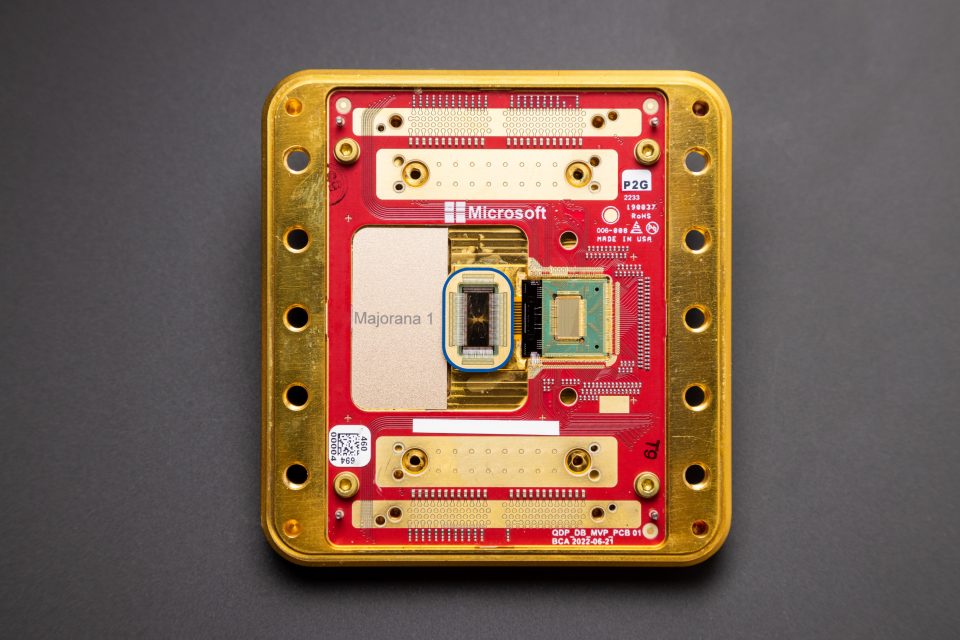Microsoft Majorana: A Breakthrough in Quantum Computing
Quantum computing has long been a frontier that scientists and engineers strive to conquer, promising to revolutionize fields ranging from cryptography to material science. One of the most significant recent advancements in this domain comes from Microsoft’s Majorana-based quantum computing research, which aims to harness topological qubits for scalable and fault-tolerant quantum computation.
Understanding the Majorana Fermion
The foundation of Microsoft's quantum computing approach lies in a theoretical particle known as the Majorana fermion. First proposed by Italian physicist Ettore Majorana in 1937, these particles exhibit the unique property of being their own antiparticles. Unlike conventional qubits, which are prone to environmental interference, Majorana fermions provide a more stable, error-resistant method of storing quantum information.

Microsoft's Approach to Majorana Qubits
Microsoft’s research team, in collaboration with global scientific institutions, has been working on realizing Majorana fermions in condensed matter systems. Their approach involves:
- Topological Superconductors: Microsoft’s hardware design incorporates nanowires in superconducting environments, where electron interactions can give rise to Majorana zero modes.
- Braiding Operations: A key feature of Majorana qubits is their ability to perform quantum computations via non-Abelian braiding, a process where qubit states evolve topologically rather than through conventional gates, making them inherently fault-tolerant.
- StationQ & Azure Quantum: Microsoft’s StationQ, a research initiative dedicated to topological quantum computing, integrates findings into Azure Quantum, bringing quantum capabilities closer to commercialization.
Why Majorana-Based Quantum Computing Matters
Traditional quantum computing approaches, such as superconducting qubits (used by Google and IBM) and trapped ion qubits (utilized by IonQ), suffer from high error rates due to quantum decoherence. Majorana qubits, on the other hand, provide:
- Topological Protection: Their non-local encoding of quantum states minimizes external interference.
- Scalability: With higher fault tolerance, fewer error-correcting qubits are needed, making large-scale quantum systems feasible.
- Potential for Commercial Use: Integration with Microsoft’s cloud-based services could offer enterprise-ready quantum solutions in fields like drug discovery, logistics, and AI optimization.
Challenges and the Road Ahead
Despite its promise, Majorana-based quantum computing is still in its experimental stages. Key challenges include:
- Fabrication Complexity: Engineering topological superconductors with stable Majorana modes remains a major hurdle.
- Verification of Majorana Signatures: While Microsoft has reported promising results, independent replication and verification by the broader scientific community are critical.
- Industry Competition: With Google, IBM, and other quantum computing firms advancing their own approaches, the race for quantum supremacy is highly competitive.
The Future of Quantum Computing with Microsoft
Microsoft’s long-term vision is to integrate Majorana qubits into a full-stack quantum system accessible via Azure Quantum. If successful, this could revolutionize fields such as:
- Cryptography: Breaking classical encryption methods while enabling quantum-resistant algorithms.
- Material Science: Simulating molecular interactions to design new materials and drugs.
- AI & Machine Learning: Enhancing AI capabilities by solving optimization problems exponentially faster.
Final Thoughts
Microsoft's pursuit of Majorana-based quantum computing represents one of the most ambitious projects in modern physics and engineering. While challenges remain, the potential impact on industries and scientific discovery is immense. If Majorana qubits prove to be the breakthrough they promise, they could redefine the trajectory of quantum computing, bringing us closer to a future where quantum advantage becomes a practical reality.
For tech enthusiasts, researchers, and industry leaders, keeping an eye on Microsoft's progress in this space is essential. The next decade could mark the transition from theoretical exploration to real-world quantum applications, and Majorana fermions might just be the key to unlocking this future.
